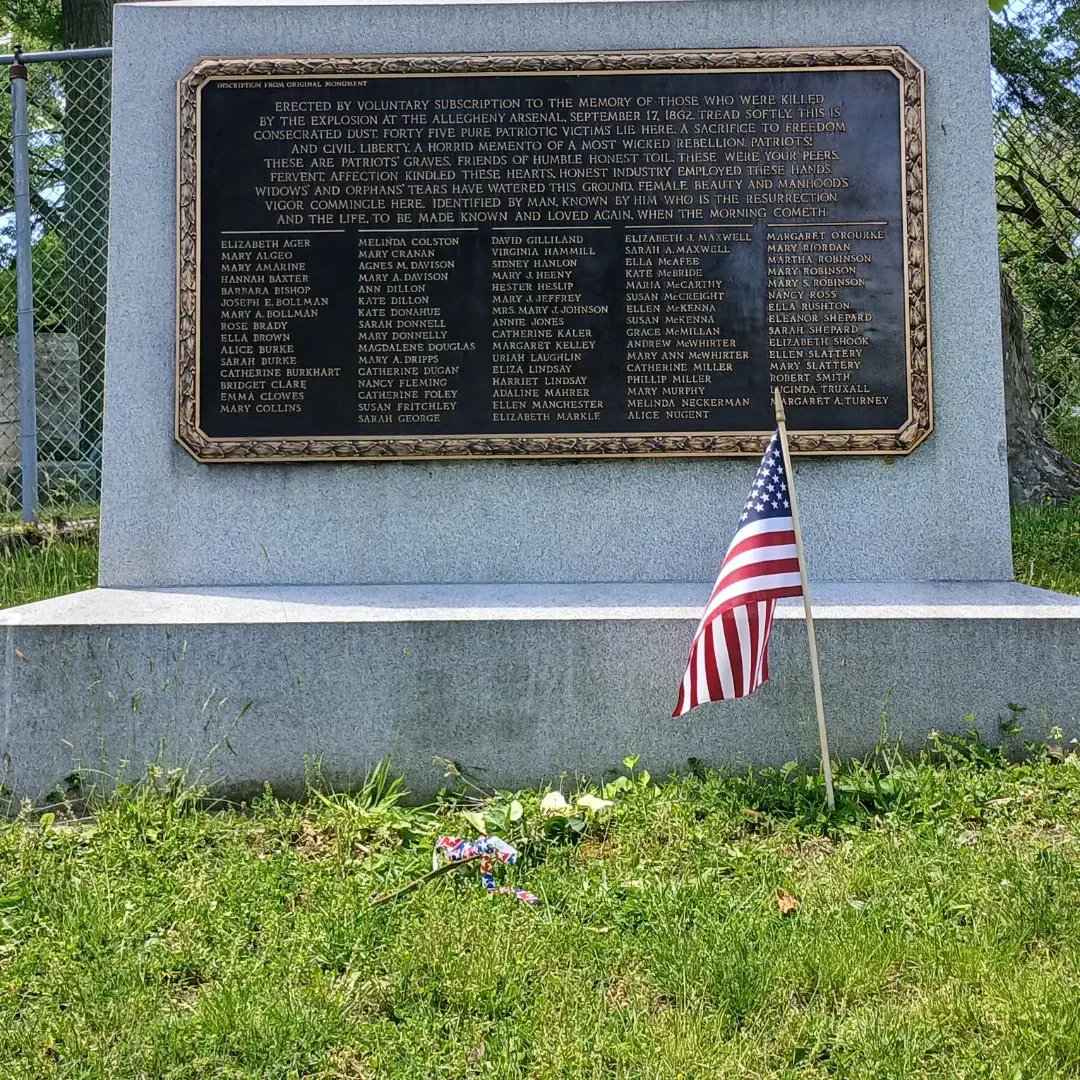This solemn monument in Allegheny Cemetery replaces an earlier marble obelisk, marking the final resting place of 43 young women who perished in one of the worst industrial disasters of the American Civil War. On September 17, 1862—the same day as the bloody Battle of Antietam—an explosion ripped through Lawrenceville's Allegheny Arsenal, killing approximately 78 young workers, most of them girls employed to assemble and package munitions.
The Pittsburgh Gazette called the scene "an appalling spectacle." Where the flames raged fiercest, only piles of white bones remained—many bodies burned beyond recognition. These were primarily small, nimble-fingered children, working long hours in a city already booming with manufacturing might. The harsh reality of 1860s Pittsburgh was that children, regardless of gender, labored in hazardous conditions with little protection.
To honor these lives cut short, Allegheny Cemetery donated land for a mass burial pit—far from the ornate plots of prominent families profiting from wartime production. As the Gazette mournfully noted, "By this terrible calamity all are of the poorer classes."
This tragedy stands as the most significant civilian death toll from a single industrial accident in the Civil War. While Antietam bore the highest military casualties in a single day, the Arsenal blast revealed the staggering human cost shouldered by civilians—particularly women and children—away from the battlefield.More than a century later, the Arsenal Monument remains a stark reminder: the price of war is not only paid in combat, but also in the aftermath. From Afghanistan and Syria to the drug wars in Colombia and Mexico, civilian lives continue to be treated as collateral damage. At the same time, women and children still serve—officially or silently—in roles that bring them into harm's way.
As we reflect on this tragic chapter, let it renew our call for restraint, wisdom, and empathy. "Wisdom is better than weapons of war." The quiet voices of the poor and vulnerable deserve to be heard over the clamor of political ambition and military impulse. In this space of remembrance, the Arsenal Monument implores us to listen—to history, to conscience, and to those who have borne the cost of conflict.

